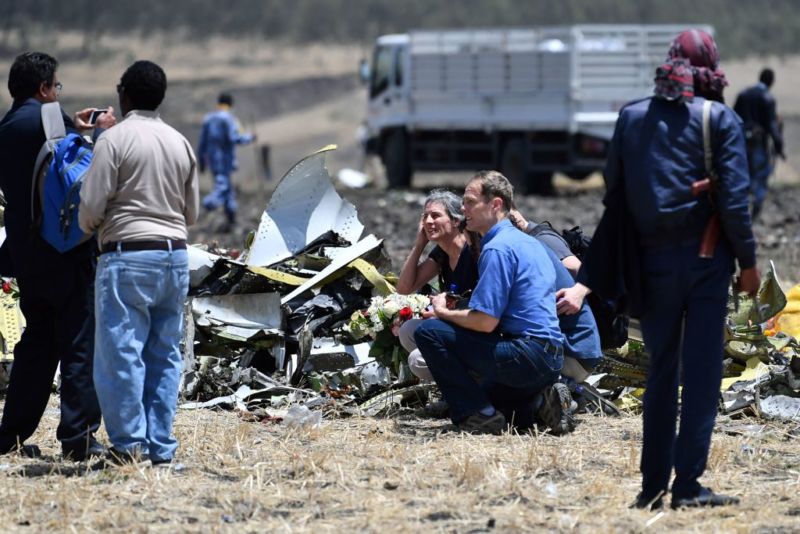737 MAX crashes “linked” by satellite track data, FAA says

Enlarge / Relatives of the victims of the Sunday plane crash take a picture next to a pile of airplane fuselage at the crash site of the Ethiopian Airlines operated Boeing 737 MAX aircraft, at Hama Quntushele village in the Oromia region, on March 13, 2019. - A Nairobi-bound Ethiopian Airlines Boeing crashed minutes after takeoff from Addis Ababa on March 10, 2019, killing all eight crew and 149 passengers on board, including tourists, business travelers, and "at least a dozen" UN staff. Families of the victims were taken to the remote site on March 13, 2019, where the plane smashed into a field with 157 passengers and crew from 35 countries, leaving a deep black crater and tiny scraps of debris. (credit: TONY KARUMBA / AFP / Getty Images)
The Federal Aviation Administration issued an emergency order grounding all Boeing 737 MAX aircraft on March 13, citing new data that showed a possible link between the March 10 crash of an Ethiopian Airlines flight and the crash of a Lion Air flight off the coast of Indonesia last October. In an interview with NPR's David Greene this morning, acting FAA Director Dan Ewell said that "newly refined satellite data" from a flight telemetry system had led the agency to make the move.
Both Ethiopian Airlines Flight 302 (ET302) and Lion Air Flight 610 (JT610) were recently acquired 737 MAX 8 aircraft, and both were lost with all aboard just minutes after take-off. According to the emergency order issued by the FAA, "new information from the wreckage concerning the aircraft's configuration just after takeoff that, taken together with newly refined data from satellite-based tracking of the aircraft's flight path, indicates some similarities between the ET302 JT610 accidents that warrant further investigation of the possibility of a shared cause for the two incidents that needs to be better understood and addressed."
The source of the data in question is a combination of telemetry feeds from the flights' Automatic Dependent Surveillance(ADS) system. Introduced in the US in 2001 and more widely worldwide in the wake of the crash of Malaysian Airlines flight 370 in 2014, Europe has required most aircraft to carry the UHF-band ADS-Broadcast (ADS-B) system since 2017, and the FAA has mandated ADS-B for most aircraft by 2020.
Read 3 remaining paragraphs | Comments